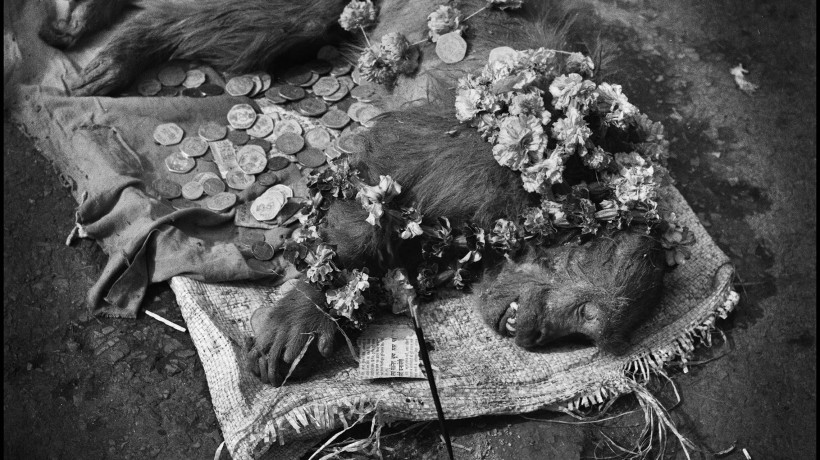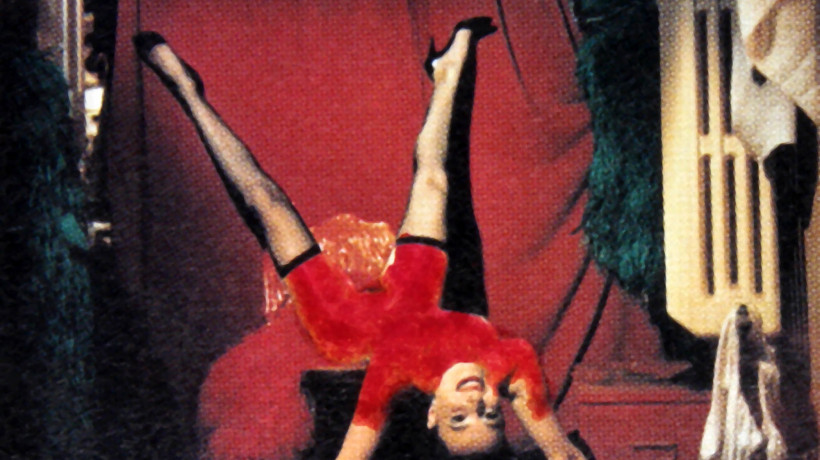Nobuyoshi Araki
Animals are becoming an increasingly bigger part of our lives, our inevitable loneliness. They complement our human or spiritual side that we are deprived of.
– Can Batukan
Abstract
Bio
References
PDF
Close
“Why look at animals?” asks art critic John Berger. I would like to address this question by paraprashing it and asking instead, “why look at dead animals?” Extinct or rare animals are the most interesting objects of the camera of curiosities and natural history museums. Hiroshi Sugimoto focuses on the dioramas where animals are shown in their habitats. Lynn Savarese revitalizes taxidermied animals as heroes of a story. Humans and animals have equal value in Michael Ackerman’s photographs. Nobuyoshi Araki’s visual diaries contain stories on life and death. Nezaket Tekin creates utopist scenes using insects. Her other work also involves documenting dead animals.
- Keywords: dead animals, dead people, photographs of dead animals, post-mortem photography, spirit photography
Nezaket Tekin (Hamburg, 1972) is Assistant Professor at the Dokuz Eylül University, Faculty of Fine Arts, Department of Photography. Her PhD thesis was about André Malraux’s ‘Imaginary Museum’ theory. Some of her lectures are: History of Photography, Photography Project, Art Management, and Memory Places. She researches on memory studies, ecology and contemporary photography. She has spent the last decade taking photos of nature and animals.
- Ackerman, M. 1999. End Time City. Italy: Scalo.
- Batukan, C. 2016. Anima-lizm. İnsan, Hayvan ve Bitkilerde Ruh Üzerine. Istanbul: Altıkırkbeş.
- Berger, J. 1992. “Why Look at Animals?” In: About Looking. Vintage.
- Burnett, R. 2012. İmgeler Nasıl Düşünür?. Istanbul: Metis.
- Çüçen, A. 2011. Derin Ekoloji. Accessed June 2, 2019. Available online here.
- Devall, B. 1990. Simple in Means, Rich in Ends: Deep Ecology in Theory and Practice. Green Print.
- Koriyama, S. 2014. Apartments of Lonely Deaths in Tokyo. Accessed March 30, 2019. Available online here.
- Picq, P., Digard, J.P. 2015. Hayvanların En Güzel Tarihi. Istanbul: İş Bankası Kültür Yayınları.
- Savarese, L. n.d. “Still Life Aviary.” In: Lensculture. Accessed January 9, 2019. Available online here.
- Simanek, D. E. 2019. Arthur Conan Doyle. Accessed March 19, 2019. Available online here.
- Sugimoto, H. 2019. Accessed June 2, 2019. Available online here.
- Topçuoğlu, N. 2000. Fotoğraf Ölmedi Ama Tuhaf Kokuyor. Istanbul: YKY.
PDF format files of individual articles are priced at 6.00EUR. If you are subscribed to Membrana Online, you may purchase PDF access to all content on our site: Membrana PDF
(Online subscription is required!)
BUY PDF: Nezaket Tekin: Photographs of Dead Animals – PDF
DOWNLOAD PDF:
The collision of image politics opens up an intriguing series of misrecognitions passed between the original photographer, Egyptian censorship formulas and the public audience.
Abstract
Bio
PDF
Close
Parallax Error is a found photographic image collection scavenged from well-known art history publications in bookstores in Cairo between 2012 and 2014. What makes the series distinct are the forms and styles of censorship used on the original images ahead of sale and public distribution. The altered images involve some of the leading figures in the canon of Western photographic history and these respected photo works enter into a process of state censorship. This entails hand-painting each photograph, in each book edition, in order to obscure the full erotic effect of the object of desire, i.e. parts of the human body. The position of photography within Egypt and much of the Arab world is a contested one shaped by the visual formations of Orientalism created by the impact of European colonial empires in the region. This archival project examines the intersection of visual cultures embedded behind the series of photographic images that have been transformed through acts of censorship in Egypt. This frames how these doctored photographic images impose particular meanings on the original photographs and the potential merits, if any, of iconoclastic intervention. Parallax Error examines the political and aesthetic status of the image object in the transformation from the original photograph to censored image. The ink and paint marks on the surface of the photograph create a tension between the censorship act and its impact on the original. These hybrid images provide a political basis to rethink visual culture encounters in our interconnected and increasingly globalised contemporary image world.
- Keywords: aesthetics, censorship, iconoclasm, images, representation
Ronnie Close is a media artist and writer living in Cairo, Egypt. His research interests look at the relationship between aesthetics and image politics, in particular in the Middle East. He has worked on a long- term research project on the Ultras football movements in Egypt, Brazil and Palestine and has produced a series of short films on these marginalized groups. Through visual research projects, public workshops and written publications he looks at the role of the image object in the contemporary world. He is an Assistant Professor at the American University in Cairo. In 2010 he was awarded a practice-based PhD from the University of Wales Newport, UK for a dissertation on the 1981 Republican Hunger Strikes in Northern Ireland. He has shown work in film festivals and exhibitions some venues include: The Photographers Gallery London (2015), QUAD Art Gallery, Derby (2014), Brighton Photo Biennial, UK (2012). He has published articles on contemporary image media theory and culture in international journals and his writing will feature in two new edited publications: Architecture and Filmmaking, Intellect Books and Photography Reframed, I.B. Tauris.
PDF format files of individual articles are priced at 6.00EUR. If you are subscribed to Membrana Online, you may purchase PDF access to all content on our site: Membrana PDF
(Online subscription is required!)
BUY PDF: Ronnie Close: Parallax Error – PDF
DOWNLOAD PDF:

